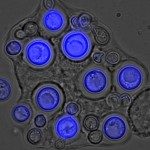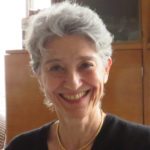Link to Pubmed [PMID] – 10421848
Med. Mycol. 1999 Jun;37(3):169-74
We studied fungemia over time in outbred mice infected with Cryptococcus neoformans and looked at its relationship with the intravenous (i.v.) inoculum size, tissue burden and survival. Fungemia was evaluated by culture of 10 microl of peripheral blood from living mice or by culture of buffy coats from sacrificed animals. For all inoculum sizes studied, fungemia could last several weeks after the i.v. inoculation. Individual susceptibility of outbred mice to cryptococcal infection was evidenced by variations in the course, duration and magnitude of fungemia and tissue localizations. These results suggest that the fungus can recirculate after the initial i.v. inoculation. Fungemia, assessed by culture of buffy coats, correlated with the extent of infection in the spleen, lung or brain (P<0.001) on day 1 after inoculation but only with yeast burden in lung or spleen on day 8, thus demonstrating that brain reacts differently to C. neoformans infection than other organs. Comparison of blood culture techniques and examination of smears suggest that cryptococci might circulate within leucocytes. Finally, quantitative blood cultures may accurately assess the fungal load during experimental cryptococcosis.

